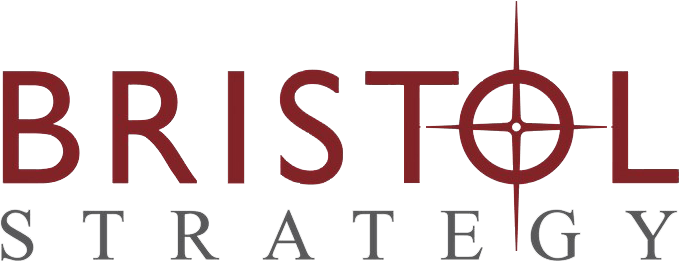 Does your forecasting feel like this? If so maybe we need to rethink things. One of the things I want to rethink is the difference between the pipeline and the forecast.
Does your forecasting feel like this? If so maybe we need to rethink things. One of the things I want to rethink is the difference between the pipeline and the forecast.
The PIPELINE isn’t the same as the FORECAST. Even though we have almost always squished these two distinctive concepts into one, they’re really not the same. But there’s an unquestioned assumption at work here.
If the deal goes into the pipeline, you just made a commitment that you’ll bring it in. And if you don’t bring it in, there will be consequences, so get with it. Or else.
How come nobody seems to realize that when it first goes into the pipeline, it’s not ready to be forecasted? Let me repeat: the PIPELINE isn’t the same as the FORECAST. It doesn’t have a “10% probability” like most CRM opportunity-management modules will say. It basically has an unmeasurable level of probability…because you just started to find out if there’s ANY probability of a win.
There I said it. Go ahead and rant at me, because I’d love to have a big fat noisy controversy over this idea.

We stumbled across this distinction last week in a meeting with Delta Waterfowl Foundation’s sizable development team, about fifteen people including field development officers and senior management. One development officer worried, “What if I put an opportunity worth $10,000 into the pipeline, but the prospect only gives us $2500? Am I in trouble for that?”
John Devney, the organization’s Vice President for U.S. Policy and serious dog lover, immedi ately responded, “That would be great and NO, you won’t get in trouble. You originally identified a $10K opportunity but you won only a $2500 gift. We want to make sure you always have enough potential income in your pipeline so you can meet your income targets without too much trouble! The pipeline isn’t the same as the forecast!”
ately responded, “That would be great and NO, you won’t get in trouble. You originally identified a $10K opportunity but you won only a $2500 gift. We want to make sure you always have enough potential income in your pipeline so you can meet your income targets without too much trouble! The pipeline isn’t the same as the forecast!”
Jason Tharpe, Chief Operating Officer, jumped in. “Hey, the pipeline is for you guys raising money out in the field. Knowing the amount of potential new relationships and gifts you can pursue helps us support you, coach you, get you help when you need it. The forecast is for us guys in management, so we can manage our cash flow.” Jason is the guy on the left, next to his formidable wife Deanna, another nonprofit professional we’ll tell you about in another blog. (PS: Delta is now considering separating pipeline accountability from forecast accountability, and that’s going to be interesting to watch.)
 None of us had ever thought of it this way before, including me. We had all made the old assumption that once you record it in the opportunity pipeline, we’re going to hold you to winning it and make you miserable if you don’t. But in actual practice, we also hold the team accountable for:
None of us had ever thought of it this way before, including me. We had all made the old assumption that once you record it in the opportunity pipeline, we’re going to hold you to winning it and make you miserable if you don’t. But in actual practice, we also hold the team accountable for:
- – creating a pipeline at least three times bigger than the income target (3X income is just a SWAG, it could be more or less)
– becoming highly selective about which donors justify the investment of fundraising effort and which don’t, and
– building meaningful relationships early in the game, to figure out if the donor does justify the investment of scarce precious fundraising time
This is known as a conflict.
And that’s the problem. What goes into the pipeline should represent the start of a relationship, where you figure out if there’s any real possibility of securing a gift. You need a lot of opportunities at that point, because you’re inevitably going to lose some. And if you do it right, lots of the ones you lose turn out to be non-opportunities YOU rejected because there wasn’t the interest, engagement or capacity to justify additional effort on your part. In fact, you want to lose a bunch, because they’re just not good enough for you. At that point, it’s too soon to know if the gift or the sale is going to come to fruition, especially if it’s a first-time gift or a major upgrade from an existing donor. But we do want nice big fat pipelines. Then we punish folks if they don’t haul in every last opportunity.
Guess what? The math doesn’t work, and the mentality is punitive. You want your team to have a pipeline larger than the amount they actually generate. You want them to create more and more favorable relationships even if some of those relationships don’t pay off big, or right away. So why do we treat pipeline entries as if they were committed forecasts?
So let’s go over the math here. Pipeline equals 3X income target. That’s good! It means you get to lose, or preferably rule out, two out of every three POTENTIAL dollars you could bring in. Now let’s go after the squishy stuff, the relationship building, the funder selection, the time needed to figure out if the donor is interested or ready or able or willing to give. Most times you won’t know that stuff at the earliest meeting. And therefore, it’s really asking too much of people to demand a commitment (forecast) of opportunities at the earliest stages of cultivation. You know, the ones you just plopped into the pipeline for the first time.
Does that really mean you should flog the crew opportunity by opportunity, demanding 1 to 1 ratios of success? Or does it mean celebrating your team’s ability to identify and build up a boatload of potential deals so they never run out of opportunity?
I vote for option two. Let’s shift the model.
The PIPELINE is for you, the development officer, to make sure you’ve got more than enough potential to meet your income targets. It goes into the pipeline when you know the opportunities qualified and there’s decent potential. Management needs to see your potential so they can remove obstacles to your success, provide coaching, and make it easier for you.
The FORECAST is for you in the management team, to assess cash flow and conduct forward planning, improvement initiatives, or belt tightening based on valid evidence. It goes into the forecast ONLY when the deal has reached a defined state or level of probability. Like 60%.
Comments, questions, or doubts about my sanity? Bring it on.
Note: If you want to learn more about pipelines and getting them donor-focused, you might like to read Teach Your Pipeline to Speak Donor.

